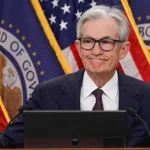Stock market dips can create a big portfolio risk during your earlier retirement years — and many investors don’t prepare, financial experts say.
The issue, known as “sequence of returns risk,” refers to how the timing of withdrawals paired with stock market losses can affect how long your retirement savings last.
Your first five years of retirement are the “danger zone” for tapping accounts during a downturn, according to Amy Arnott, a portfolio strategist with Morningstar Research Services.
More from Personal Finance:
Why uncertainty makes the stock market go haywire
There can be a ‘survivor’s penalty’ after a spouse dies — how to avoid it
How Social Security Administration leadership changes may affect benefits
If you take assets from accounts when the value is falling, “there’s less money left in the portfolio to benefit from an eventual rebound in the market,” she said.
Moreover, sequence risk can increase your chances of outliving retirement savings, Arnott said.
Let’s say your portfolio dropped by at least 15% during your first year of retirement and you also withdrew 3.3% of the balance.
That combination would increase your odds of depleting the portfolio within 30 years by six times compared with someone who has a first-year positive return, according to a 2022 Morningstar report. The Morningstar research assumed future yearly withdrawals were fixed at the same share of the portfolio.







